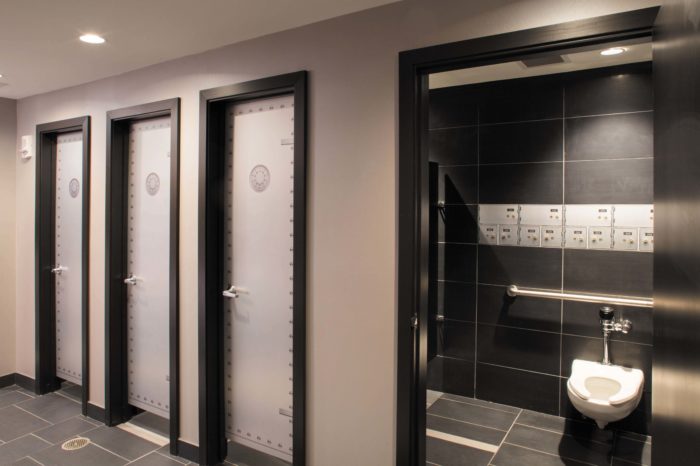In downtown Cincinnati stands the historic Bartlett Building – designed and built in 1901 by famed architect Daniel Burnham. Once the tallest building in Ohio, this Neoclassical-style 19-story tower has gone through many transformations, eventually taking its place on the U.S. National Register of Historic Places.
In 2013, after being vacant for 3 years, Columbia Sussex bought the building and Renaissance Hotels agreed that it would be the perfect place to design a boutique hotel for a vibrant city such as Cincinnati. It now features 323 rooms with upscale amenities, contemporary design, and beautiful views of downtown.
Challenge:
Renaissance Hotels are known for their interest in regionalism as well as enhancing and respecting the history of older buildings. Cauhaus Design was hired to help transform the historic structure into a dynamic, modern hotel. As the main focal point of the design, Robert Laschever and Tobin Schermerhorn from Cauhaus Design decided to play off of the banking history of the Bartlett building in order to create and tell its story.
When asked how the team formed their idea, Laschever enthusiastically recalls, “In the basement is the most phenomenal vault and vault space I’ve ever seen. There is a beautiful 8’ diameter round vault door and the room is lined with incredible, metal safety deposit boxes – that was the inspiration.”
Using the vault room as the design foundation, Cauhaus Design looked for fun and creative ways to tell the banking story throughout the hotel. For one of the more humorous design elements, they decided that each restroom could look like a vault. “Walking into the stalls in the restroom would be like walking into a safe room containing safety deposit boxes.”
Solution:
Cauhaus Design knew that in order to give a realistic appearance of a vault door, they had to find a company that could provide durable, high-quality custom graphics on a metal substrate. To bring their vision to life, they contacted Fashion Architectural Designs, an ATI distributor, to find the perfect solution. Fashion Architectural Designs knew exactly what to recommend – ATI’s Fusion process, which fuses an image with the substrate surface.
Cauhaus Design and ATI worked together to create a graphic which featured a combination dial and bolts to mimic the look of a vault door which was fused onto ATI’s Mill Satin Aluminum substrate. The metal substrate was perfect for the high-traffic environment and the graphic is an unmistakable clue into the hotel’s history. To continue the design, tiles lining the walls inside the restroom look like deposit boxes, completing the vault effect.
Laschever also points out that the doors are also evocative elements that make guests curious about the building’s past and its story. He says, “It’s a wonderful educational insight into the history. It’s also playful and fun and everyone seems to love it.”
- PRODUCT
- Fusion Wall Panels / Door Panels
- FORMULA
- Custom Art + Mill Satin Aluminum
- DESIGNER / BUILDER
- Cauhaus Design
- CATEGORY Fusion , Hospitality Design , Specialty Surfaces , Wall Panels


